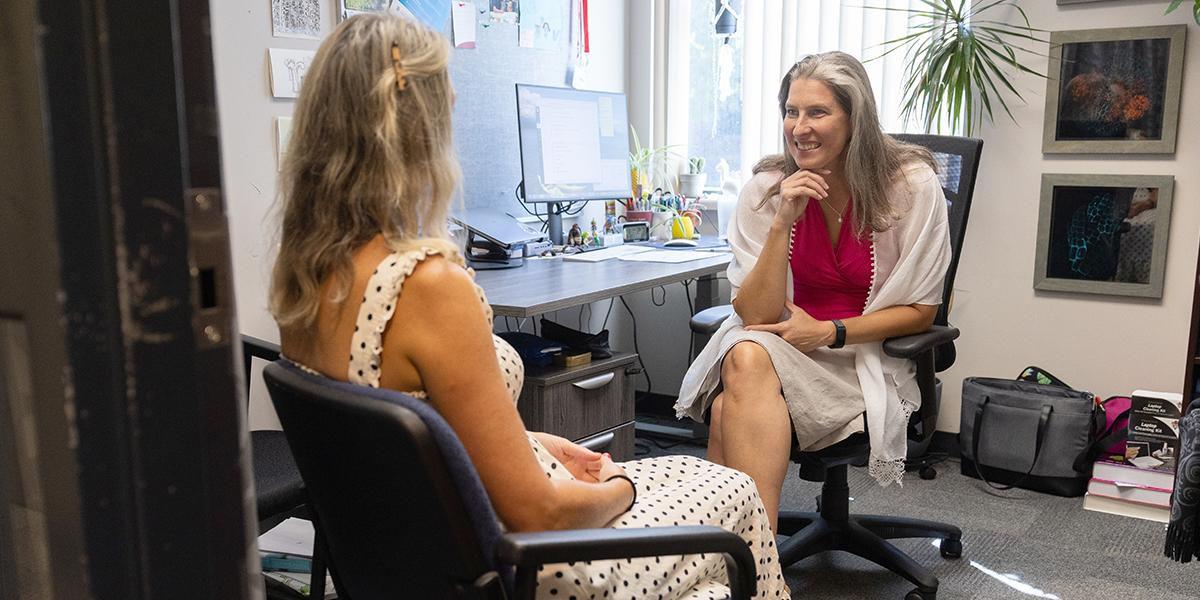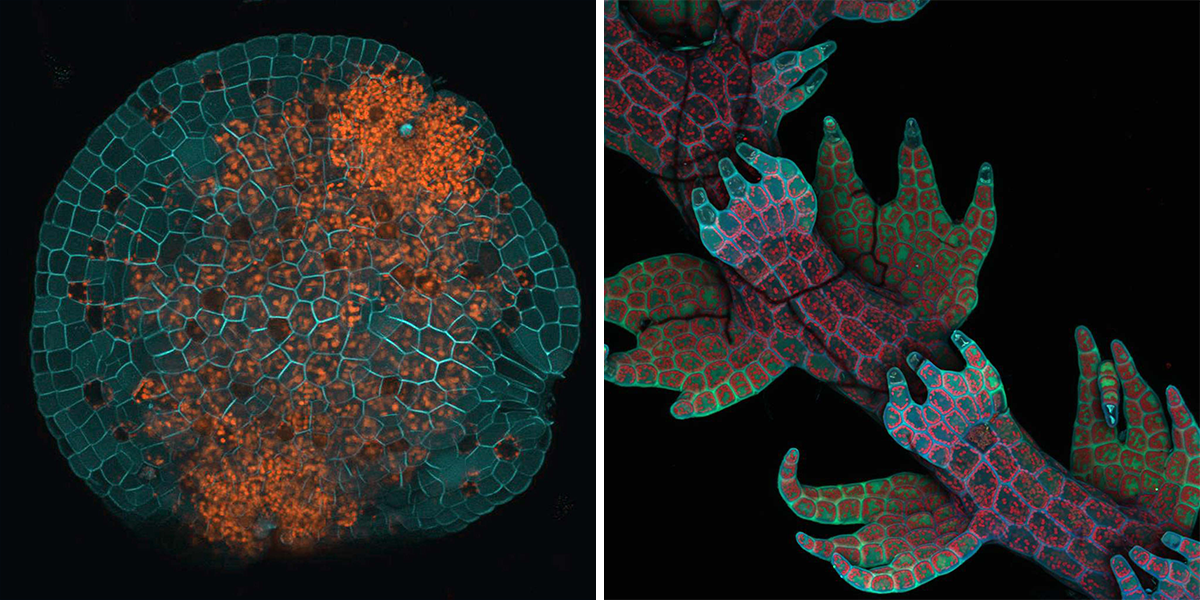Science at the crossroads of creativity and ethics
Dr. Robin Young looks at cell biology through a lens of ethics, diversity and inclusion

Dr. Robin Young looks at cell biology through a lens of ethics, diversity and inclusion

In spring of 2022, we asked our teaching faculty to tell us who among them were offering innovative learning experiences, environments, and/or introducing new ways of overcoming barriers in their classes. This is part two in a six-part series recognizing teaching faculty at UBC.
A common image that crosses the mind while thinking about cell biology is simply watching and studying cells under a microscope. But Dr. Robin Young, Assistant Professor of Teaching in the Department of Biology of the Irving K. Barber Faculty of Science at UBC Okanagan, has redefined this conventional perception of the discipline through a thoughtful convergence of three seemingly disparate areas: research, ethics and creativity.
Traditionally, cell biology courses have laid great emphasis on grades and exams. But Robin designs projects to help her students make strong connections between biology and justice. “I want to ensure that my students’ projects are topical, so I focus on issues that are relevant in the current news,” she says. “The Black Lives Matters movement that came to light in 2020 was a perfect opportunity to remind my students of the types of disparities that exist in scientific research. It gave us a chance to talk about why certain topics are traditionally covered while others have been overlooked or left out of our textbooks. We talked about how scientific research has perpetuated racism by not embracing diversity to the extent that it should, and is therefore not a level-playing field for under-represented minorities. As a teacher, I want my students to understand the underlying injustices that exist in the subject, by challenging stereotypes and looking at it through a lens of ethics, diversity and inclusion.”
"The Black Lives Matters movement that came to light in 2020 was a perfect opportunity to remind my students of the types of disparities that exist in scientific research."
Dr. Robin Young, Assistant Professor of Teaching in the Department of Biology of the Irving K. Barber Faculty of Science at UBC Okanagan


Robin chose to study cell biology because of her love for microscopes, but the turning point in her journey was when she did her PhD at UBC Vancouver. Her PhD supervisor, Dr. Lacey Samuels in the Department of Botany, encouraged her to explore and strengthen her expertise in both teaching and research – a unique and unconventional approach that Robin strongly believes played an instrumental role in her career.
What sets Robin’s work apart is her awareness that although science is based on theory, knowledge needs to go beyond the textbook – and that it is imperative for her students to understand the real-world applications of what they learn in the classroom.
But simply submitting regular project work is not enough for her. In Robin’s class, students can choose how they present their projects and are encouraged to unleash their creativity. Robin grades projects in many different formats, right from videos, blogs posts and infographics to audio podcasts, news articles, press releases, including accessible formats. “I’d previously never marked videos – but I love them!” Robin says.
She says, “Even scientists need to be able to communicate within the world they operate in! What is the point of making scientific discoveries if you cannot explain them to people? Subject matter expertise is undoubtedly crucial, but it’s equally important to learn how to communicate and solve problems. I teach content that will allow my students to strengthen these essential skills that will carry them forward.”
It comes as no surprise that the favourite aspect of Robin’s role is her students. She enjoys watching them analyze complex topics, draw their own inferences and present their ideas in unconventional ways that are a departure from the norm. “Students go to all lengths while working on their projects, and I feel so happy that they are receptive to this learning approach. Inspired by these lessons, two of my students went on to build a virtual conference called Sciversifyduring the pandemic, where they invited scientists to collaborate with students, with the vision of making science more comprehensible and accessible to a diverse audience. I feel so proud to see my students making an impact in the world, shining beyond the classroom, and taking their learnings forward.”
"Even scientists need to be able to communicate within the world they operate in! What is the point of making scientific discoveries if you cannot explain them to people?"
Dr. Robin Young, Assistant Professor of Teaching in the Department of Biology of the Irving K. Barber Faculty of Science at UBC Okanagan

“At the end of the day, I want my students to be curious, take risks and not be afraid of failing,” Robin says. This approach helps her and her students focus on the things that truly matter – enjoying the learning process with an open mind and building strong foundations for a future that considers ethics, diversity and inclusion alongside advancements in technology and innovation.
Written by Aditi Ghosh-Mooruth, UBC Internal Communications
September 2022
Accounting. Marketing. Leadership. Lego? How UBC Sauder’s Dr. Kari Marken challenges her Creativity students with purposeful play (Sept. 20)
Necessity is the mother of a delicious invention: Breaking down barriers and redefining how students learn to cook at UBC (Oct. 3)
A ‘quiet rumbling’ that led to a visible focus on student humanity: How Katie Lee Bunting’s shift towards values-based teaching transcends the confines of traditional thinking (Oct. 10)
Making the case for open-access law texts: Dr. Samuel Beswick has created Canada’s first online open-access tort law casebook (Oct. 17)
Co-creating a future beyond the classroom: How Dr. Su-Jan Yeo emboldens students to turn urban planning ideas into real-world outcomes (Oct. 24)
Find the latest news, updates, events, and useful dates from across UBC, curated for faculty and staff by Internal Communications.
Access a library of resources from multiple UBC websites, all in one place.